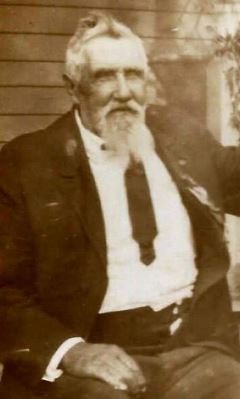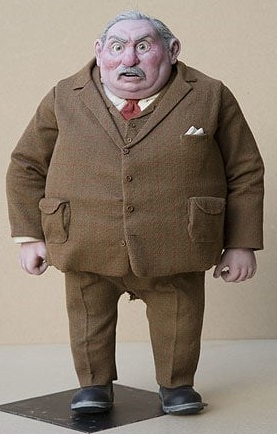 Often the best part of a story is the characters who step across the pages of the book. The depths to which the author examines these characters is what keeps the reader engaged. One way to begin to examine a character is to pick up an old photograph of an ancestor. Observe the height, weight, eyes, skin color, and body type. Examine the hairline, the shape of the nose. Search for something memorable, even plainness can be made memorable.
Often the best part of a story is the characters who step across the pages of the book. The depths to which the author examines these characters is what keeps the reader engaged. One way to begin to examine a character is to pick up an old photograph of an ancestor. Observe the height, weight, eyes, skin color, and body type. Examine the hairline, the shape of the nose. Search for something memorable, even plainness can be made memorable.
What Do You See?
Never tell the reader what your character looks like. This stops the action of the story and pushes your reader out to make him debate something in his mind. Rather, show the character doing something, such as rushing into the room, wiping his sweaty palms over the grey suit stretching over his ample stomach. That’s a little better. The reader now knows the character is in a hurry, probably late and anxious, and he’s overweight. We can see a glimpse of him.
What is He Doing?
So then, we should move on with what he’s actually doing.

He’s looking for someone perhaps, and he strains to see over the top of the receptionist counter to the list of doctors on the wall, rubbing his hands across his forehead. He doesn’t have to say anything. We know he’s anxious about meeting someone. He made an attempt in the earlier paragraph to smooth his clothing. He wants to give a favorable impression. He’s a short man since he has to strain to see the list on the wall. He has a doctor’s appointment. He might be concerned about his health.
So now we have a short overweight man, who has come to an expert for advice. He has concerns. Something’s been weighing on him enough to seek an explanation. So, he may be a thoughtful person. By thoughtful, I mean he thinks. He’s aware something may not be right.
What Do You Know?
He came to the appointment alone. He is not married and doesn’t have a friend to accompany him. He may be independent, or he may be friendless, or he may not want to bother anyone with the potential of bad news.
We don’t know yet what’s happening with this character, but we do know he’s a short man, overweight, and his hands are sweaty. He is wearing a suit, which tells me he wants to give a good impression on whomever he’s meeting with.
No Cardboard Cutouts
In writing about your characters, don’t make them cardboard cutouts standing in the corner of the room. Give them habits and mannerisms your reader can identify with. Give them some sort of style, even if it’s bad or out of style. Give them a bad habit or two.
Give your characters depth. Your reader will stay longer with you if you do.
____________Yvonne Erwin, SWG President ____________
 Yvonne Erwin begins her fourth term as President of the Springfield Writers’ Guild. She has served on the Board for the past fifteen years: two terms as secretary, and two terms as Director-at-Large. She served as Contest Chair for one year. Erwin has served the most consecutive years in office. See her full bio here.
Yvonne Erwin begins her fourth term as President of the Springfield Writers’ Guild. She has served on the Board for the past fifteen years: two terms as secretary, and two terms as Director-at-Large. She served as Contest Chair for one year. Erwin has served the most consecutive years in office. See her full bio here.
 How do writers know which scenes to include and which ones to summarize?
How do writers know which scenes to include and which ones to summarize?

 Often the best part of a story is the characters who step across the pages of the book. The depths to which the author examines these characters is what keeps the reader engaged. One way to begin to examine a character is to pick up an old photograph of an ancestor. Observe the height, weight, eyes, skin color, and body type. Examine the hairline, the shape of the nose. Search for something memorable, even plainness can be made memorable.
Often the best part of a story is the characters who step across the pages of the book. The depths to which the author examines these characters is what keeps the reader engaged. One way to begin to examine a character is to pick up an old photograph of an ancestor. Observe the height, weight, eyes, skin color, and body type. Examine the hairline, the shape of the nose. Search for something memorable, even plainness can be made memorable.
 Yvonne Erwin begins her fourth term as President of the Springfield Writers’ Guild. She has served on the Board for the past fifteen years: two terms as secretary, and two terms as Director-at-Large. She served as Contest Chair for one year. Erwin has served the most consecutive years in office. See her
Yvonne Erwin begins her fourth term as President of the Springfield Writers’ Guild. She has served on the Board for the past fifteen years: two terms as secretary, and two terms as Director-at-Large. She served as Contest Chair for one year. Erwin has served the most consecutive years in office. See her